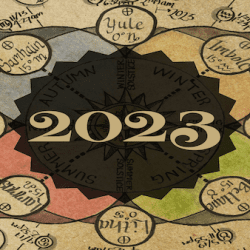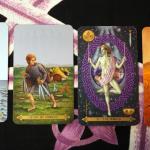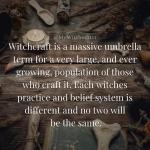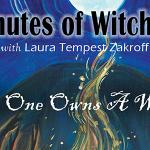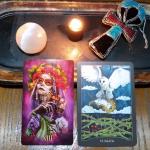The Spring Equinox arrives on March 20th this year.
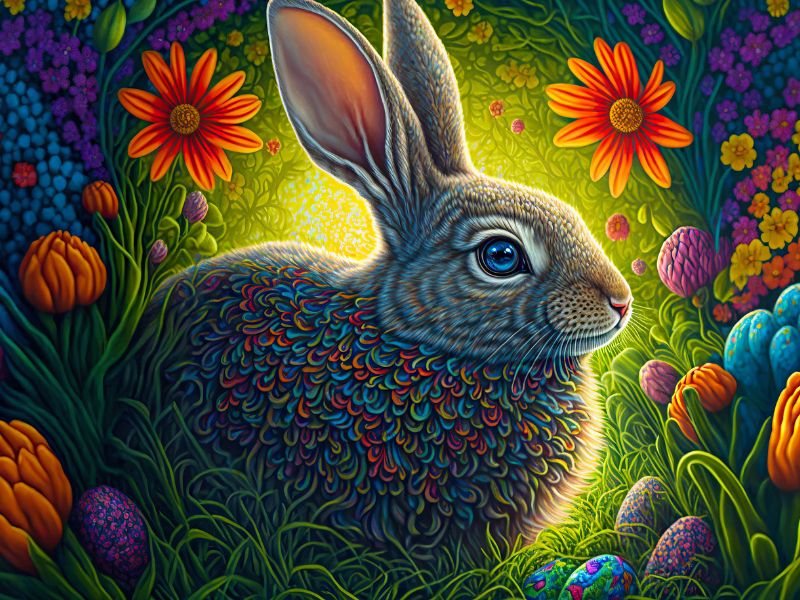
This event has been celebrated throughout time by many cultures. Often in Pagan circles, you will hear this time referred to as Ostara. This celebration is one of the eight sabbats on the Wheel of the Year. Ostara, named after the Anglo-Saxon goddess of spring and fertility, Eostre, celebrates spring’s return.
At this equinox, we’re on the threshold of spring, which is considered a renewal period. Several themes are associated with this celebration, such as fertility, rebirth, and new beginnings. Further, the spring equinox marks a time when the length of day and night are equal, and, therefore, there is also the theme of balance.
I wanted to discuss themes in this article because being aware of them allows us freedom in how we celebrate. By extracting the theme of a celebration, we can adapt them to honor our own needs while simultaneously honoring the earth’s cycle.
There are many reasons a person might need to modify a celebration. This adaptation becomes even more pertinent in geographic locations where this time of year doesn’t fit the typical spring criteria. As such, this article will focus on the themes of this festivity. So, if you’re looking for a way to participate that aligns with you, you can tailor these to suit your needs.
Fertility
During the Spring Equinox, there is a theme of fertility. This is a time of year when flowers emerge from the depths of the soil as the frost of winter begins to subside. From an agricultural standpoint, this is also the time of year when you literally start to plant seeds, but oftentimes, this is figurative, as well.
This can be a time when we begin to organize our surroundings and plant our own metaphorical seeds for the future yet to come. These seeds can emerge as new ideas or as a forward push to pursue our dreams. Often we mirror the earth around us. Winters are known to be periods of hibernation, and spring is a time of revitalization. In some pagan traditions, this is a time to honor the goddess Eostre we mentioned. Eggs and rabbits are both symbols of fertility and abundance, which is why these also make an appearance during the festivities.
I’ve mentioned this before in a previous article, but fertility doesn’t have to be interpreted in the strictest definition. Oftentimes, fertility can pertain to abundance and prosperity—ergo, our wallets can be fertile during this time—with a little motivation and a dash of magic.
Rebirth
As the spring equinox approaches, we celebrate the coming of new life and the renewal of nature. This is a time for honoring the natural cycles and embracing our potential for growth and transformation. As such, rebirth is another common theme for this time of year. This theme is due to the fact that the earth itself is experiencing a rebirth after its death in winter.
The arrival of spring is seen as a time of awakening and transformation. In the wild, many animals mate in the winter or fall and have babies amid spring when the earth is flush with resources. After all, this is a time when the darkness of winter gives way to new light and new life. While this occurs in a physical sense, rebirth can be symbolic as well.
Rebirth can come in many forms, but generally, they emerge after we’ve experienced a death of sorts. Most often, this is in the form of letting something go, such as a relationship or old coping mechanisms that no longer serve us. While the process of letting go is often complicated and tiresome, eventually, we reemerge with a new lens on life.
New Beginnings
After a rebirth, we begin our journey into a brand new chapter of life. Much like the other themes, this theme of new beginnings also has literal and figurative translations. As mentioned, this period of time is a reawakening of the earth, and due to this, this phase marks a fresh start.
From an astrological perspective, the Spring Equinox occurs alongside the beginning of the Aries Season. Aries is the very first sign of the zodiac and is a sign of action and initiative. Aries is also a cardinal sign, and each cardinal sign aligns with the beginning of a season. This being the case, Aries’s domain is Spring, which represents the start of a fresh zodiac cycle.
There is also the tradition of “spring cleaning.” Many utilize this time to declutter their homes, arrange donations, and otherwise whittle down their spaces. This purging creates a blank slate around us, and many use this time as a period of starting anew.
Balance
With the length of day and night being equal, balance is also emphasized during this time. This balance also acknowledges the duality of life itself: Light and dark, night and day, and life and death. Often we are a reflection of the world around us. In the physical world, the balance of the ecosystem has been restored after a dormant winter. That said, much like the earth, we, too, can prosper when we restore the balance within.
The equinox can be a period of making peace with ourselves and focusing on recentering, which can manifest as a time that asks you to seek balance within. If you notice you’ve been burning the candles at both ends, take a moment to pause and rest. Or perhaps you’ve felt paused or disconnected. The antidote to this largely involves some form of meditation. In a previous article, “Ways to Meditate without Meditating,” I covered that meditation doesn’t have to be purely formal. So, at times, a simple meditative walk is all that is needed to restore balance.
What’s most important is using this time to assess the ways in which you are no longer in alignment and acknowledge the ways you’d like to work towards achieving personal balance. That said, you don’t have to start from scratch. There is power in introducing small, meaningful changes over time. Not only do they add up, but they allow you the space to adopt the changes incrementally, which is significantly less overwhelming.
Your Own Terms
My spirit has never been aligned with organized religion, as I feel the need to live an authentic life free from dogma. Thus, when observing sabbats, I strive to recognize their underlying themes in order to create a practice that resonates with my truest self. I encourage others who feel similarly to do the same.
In highlighting these themes, we can better understand the spirit of the land. Through this process, we can also understand our place within the world around us and our interconnectedness. By honoring the earth and ourselves in this way, we can craft a deeply fulfilling practice.







